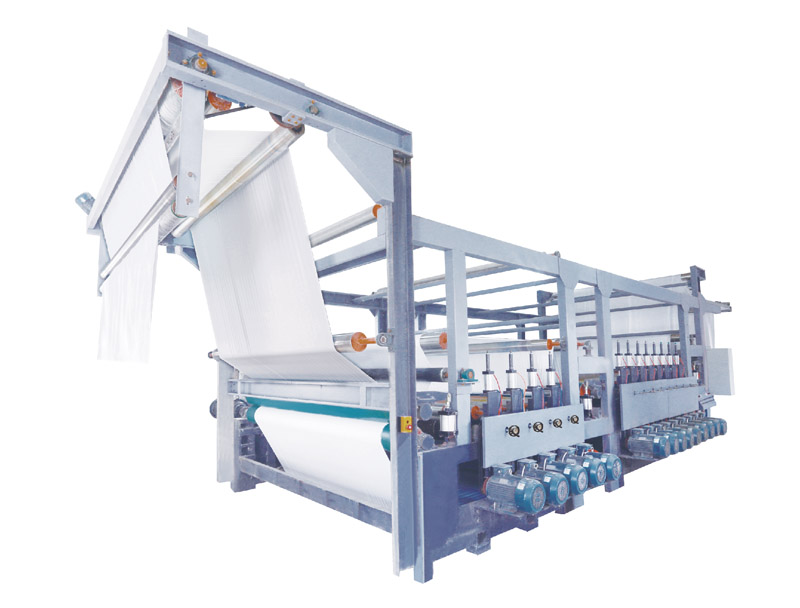1. Sanding: The surface of the fabric is rubbed with the sand leather on the sanding roller of the sanding machine, and the fiber filaments of the carbon fiber roller rub against the fabric, and the fluff produced after processing makes the fabric feel, visual sense, and hair feel greatly changed.
2. Cloth feeding: Feed the fabric from the cloth car, A-frame, etc. into the sanding machine. The cloth feeding system is composed of frame tensioner, edge suction device or photoelectric alignment.
3. Cloth output: Lead the sanded fabric out of the sanding machine. The cloth falling device is composed of a falling frame or a rolling frame.
4. Grinding roller: It is the most important part of the sanding machine. It is driven by a high-speed motor to process the surface of the fabric to produce fluff. The size of the wrap angle affects the style and weight of the sanding. The sanding roller core is outsourced (externally planted) with abrasive skin, carbon fiber silk, ceramic fiber silk, emery, etc., forming different types of sanding machines. It is also possible to combine sanding rollers of different outsourcing (explanted) varieties to form a combined sanding machine.
5. Pressure roller: Change the wrap angle of the fabric to the grinding roller through the adjustment of the pressure roller. The cloth pressing device is composed of a pressing roller, an adjusting rod and a motor.
6. Vacuuming: The sanding waste is sucked out by the fan and sent out of the machine to keep the continuity of sanding and the cleanliness of the fabric. The suction port, wind bucket, fan and the rear of the fan form the dust collection system.
7. Electrical control: Realize the operation control of the fabric through electrical appliances, adjust the operation of the grinding roller, control the tension of the pressure (roller) and process storage, etc.
8. Tension control: Control the tension of the cloth surface by means of tension sensor or elastic frame.
9. Cloth vacuuming: solve the problem of removing residual fluff on the surface of the fabric and improve the quality of the fabric.
10. Type of sanding machine: According to the arrangement of the grinding rollers, the vertical arrangement is vertical, the horizontal arrangement is horizontal, and the circular arrangement is planetary.
11. Dry and wet grinding: the sanding with a dry cloth is dry grinding, and the sanding with a wet cloth is wet grinding.
REHOW provides textile industrial machines to the whole world, helping them improve efficiency and reduce labor cost. ReHow provides various types of textile machinery: raising machine, cloth inspection machine, packing machine, coiling machine, slitting machine, cross cutting machine, ribbon weaving machine, weaving machine, etc. If you are interested in us, please contact us now!
Post time: Apr-24-2023






